Almost the first thing you see after climbing the Museum of Sydney's blond stairs toward the temporary exhibition The Enemy at Home is Billy Hughes come back to life. A flickering, ghostly film shows Australia's prime minister for most of the First World War shaking his fist at some grave threat. That threat, the film subtitles tell us, is Germany — not the stolidly respectable republic of today but the spike-helmeted warrior-kingdom of a century ago, locked in combat with half the world for four bloody years from 1914 to 1918.
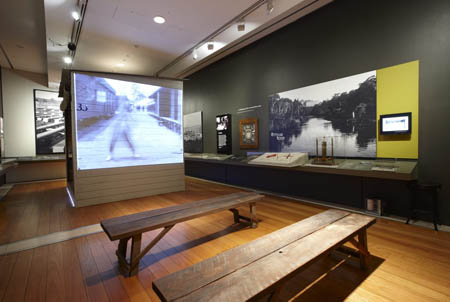
© 2011 Migration Heritage Centre: Powerhouse Museum
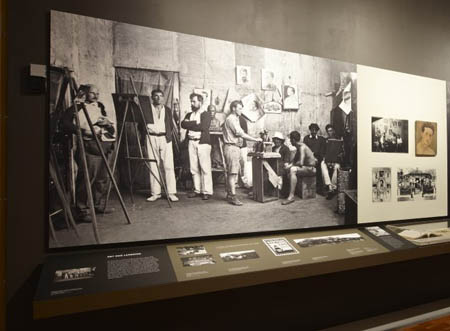
photograph by Paul Dubotzki
© 2011 Migration Heritage Centre: Powerhouse Museum
Then again, the greatest of photographs would struggle to stand out amid the exhibition's delightful objects and dubious text.
The objects are few and, in a way, unspectacular — some letters and newspapers, a couple of wooden boxes with carved lids, a camera, an internee's coat, a zither. It's their survival that's remarkable, along with their momentary rescue from the Dubotzki family and the vaults of various institutions. From Sydney's Mitchell Library come written appeals by internees to the outside world, one with a frantic message of 'Long live Liberty Fraternity Equality and down with those who force us to [be] slaves', that suggests the writers' desperation and sheer, uncomprehending indignation. From Berrima's district museum comes a dowdy framed memorial to some camp guards that tries to wrap a neat khaki bow around a different story, that of an embarrassingly undangerous war service. The Australian War Memorial supplied the internee's coat — dull enough if seen from the front but unsettling or comical from the rear, on which its wearer sewed in large letters three German words nicely calculated to give his guards a good case of apoplexy — 'Gott strafe England'. But the most evocative objects may be the little zither with its crimson cover, given by an internee to a local girl and treasured ever since, and one of those wooden boxes with a crude carving of Holsworthy's machine gun tower.
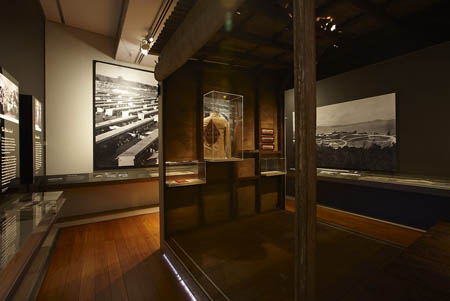
© 2011 Migration Heritage Centre: Powerhouse Museum
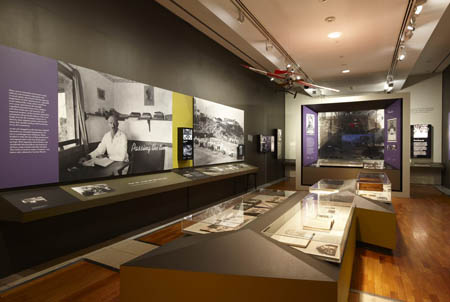
© 2011 Migration Heritage Centre: Powerhouse Museum
The view that Australia hounded its essentially harmless German minority during the First World War might be news to many people. But it's been around at least since the publication in 1980 of Michael McKernan's masterful book The Australian People and the Great War. McKernan pointed to an ugly impulse among Australians who didn't or couldn't enlist to take a stick to a hitherto harmless minority. Heavily committed to a geographically remote war effort, these civilians 'needed to manufacture a war close at hand lest their knitting and fund-raising be their only real war experience'.[2] Another historian, Gerhard Fischer, built on McKernan's insight to write his own book about wartime internment, Enemy Aliens, a dark and detailed account that condemned 'Anglo-Saxon Australians' for closing ranks against the German minority.[3]
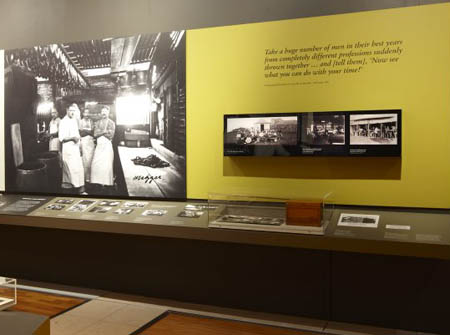
photograph by Paul Dubotzki
© 2011 Migration Heritage Centre: Powerhouse Museum
It was ridiculous to lock up Edmund Resch, the 70-year old brewer naturalised in 1889 who had encouraged many of his employees to enlist to fight his native Germany. The 'old brewer', Fischer wrote in Enemy Aliens, 'was forced to spend twelve horrid months in the overcrowded barracks of the German Concentration Camp at Holdsworthy [sic], to be released only two weeks after the armistice in November 1918.'[5] An exhibition panel repeats this sorry tale. But according to the newspapers Resch was released after just three months.[6]
It seems that only two in five German nationals in Australia were ever interned. And wasn't it reasonable to imprison young Germans legally obliged to try to return to their homeland and enlist, ditto sailors hauled off German warships? What should have been done with Dubotzki himself? Apart from having at least one brother in the German army, he seems to have been cataloguing British resources in South-East Asia as war approached. If Dubotzki had been an Australian photographer on German soil in 1914 he might have had to answer some tough questions, and at the very least surrender his camera. He would surely have ended up in Ruhleben, the wartime home outside Berlin for British subjects in Germany who were rounded up rather more smartly and interned no more or less humanely than their opposite numbers in Australia.
But it might not matter that the exhibition's message is a dubious one. The quiet and intimate voice of what's on display whispers under all those heavy-handed words in a voice that Nadine Helmi and Gerhard Fischer might approve of and could have encouraged. As I watched visitors engage with the exhibition I eavesdropped on comments that children made to teachers and husbands made to wives. No one showed the old Australian prejudice against a wartime enemy. Most seemed to take in what they saw — or, more often, what they read — less as a condemnation of what we did to them than a kind of proof of individual ingenuity and faith in the human spirit in depressing conditions that the winds of war could blow towards any one of us one day.
Craig Wilcox is a historian who lives in Sydney and takes occasional tours for the Historic Houses Trust.
| Exhibition: | The Enemy at Home: German Internees in World War I Australia |
| Institution: |
Migration Heritage Centre and Historic Houses Trust of New South Wales |
| Curator: | Nadine Helmi |
| Designer: | Cathy Osborne |
| Venue/dates: | Museum of Sydney, 7 May – 11 September 2011 |
| Catalogue: | Nadine Helmi & Gerhard Fischer with contributions from Beth Hise, Stephen Thompson & Mark Viner, The Enemy at Home, University of NSW Press, Sydney, 2011, 288 pp., RRP $44.95 |
| Website: | www.migrationheritage.nsw.gov.au/exhibition/ enemyathome/the-enemy-at-home, Stephen Thompson (original concept, content and project management), Annette Loudon (designer, working from the exhibition design by Cathy Osborne) |
1 Nadine Helmi and Gerhard Fischer with contributions from Beth Hise, Stephen Thompson and Mark Viner, The Enemy at Home, University of NSW Press, Sydney, 2011, pp. 8–9.
2 Michael McKernan, The Australian People and the Great War, Nelson, Melbourne, 1980, p. 177.
3 Gerhard Fischer, Enemy Aliens, University of Queensland Press, Brisbane, 1989, pp. 6, 9.
4 Steve Meacham, 'Portraits of life from behind barbed wire', Sydney Morning Herald online edition, 4 May 2011.
5 Fischer, Enemy Aliens, p. 122.
6
Sydney Morning Herald, 1 March 1918, p. 6, and other Australian newspapers from 28 February to early March.
